
Valley of the Flame is a fantasy novel by American writer Henry Kuttner, first published in the March 1946 issue of the magazine Startling Stories under the pseudonym "Keith Hammond".

Valley of the Flame is a fantasy novel by American writer Henry Kuttner, first published in the March 1946 issue of the magazine Startling Stories under the pseudonym "Keith Hammond".
The year is 1985 and the location is somewhere in the vast, teeming jungles of the Amazon. Medical scientist Brian Raft and his two colleagues Dan Craddock and Bill Merriday are working at a small, newly built health center, researching tropical diseases. They are the only white men in the vicinity and are the last outpost of civilization. Somewhere deeper in the jungle drums have been beating for days and Craddock seems convinced that they are not beating a message, rather that they have some other, more sinister purpose. Craddock, despite his medical training, is a superstitious man "with his Welsh ghosts and his shadow-people of the lost centuries", so Raft does not take much notice of him. But soon out of the unknown comes a canoe propelled by two men with paddles. They have been working themselves to the point of almost complete exhaustion. One of these newcomers, Thomas Da Fonseca, proves to be a pilot on a mapping expedition whose plane has crashed near the second man's property. This second man, Paulo da Costa Pereira, is of indeterminate origin; he speaks Portuguese, but in a faulty manner, and carries himself in a kind of confident, haughty, evasive way that annoys Raft. Da Fonseca is sick, with a temperature far below normal, and appears to have some tropical disease. Pereira, on the other hand, seems to recover remarkably quickly. Nevertheless, Raft insists, against Pereira's will, on taking a blood sample to be certain of his health. Pereira's blood seems to be strangely mutated. If anything, it works in a superior way to normal blood. Raft overhears Pereira talking to Craddock, then suddenly these two disappear. They are seen by Merriday departing in the Center's motorboat. Craddock seems to be under the hypnotic spell of Pereira. The next morning Raft, with five natives, sets out up the river in pursuit. Raft's journey will ultimately take him to the Valley of the Flame.
The book was reviewed by Robert Silverberg for Fantastic Stories of Imagination , March 1965 issue.
Writing in Fantasy: The 100 Best Books, James Cawthorn and Michael Moorcock noted that in the book "Kuttner devised one of the most amazing lost cultures". [1]

Michael John Moorcock is an English–American writer, particularly of science fiction and fantasy, who has published a number of well-received literary novels as well as comic thrillers, graphic novels and non-fiction. He has worked as an editor and is also a successful musician. He is best known for his novels about the character Elric of Melniboné, which were a seminal influence on the field of fantasy in the 1960s and 1970s.
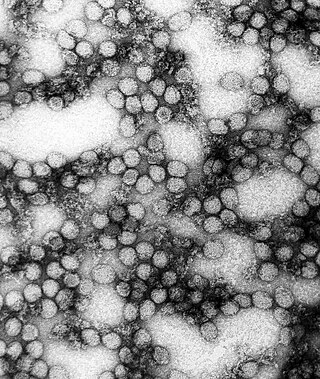
Yellow fever is a viral disease of typically short duration. In most cases, symptoms include fever, chills, loss of appetite, nausea, muscle pains – particularly in the back – and headaches. Symptoms typically improve within five days. In about 15% of people, within a day of improving the fever comes back, abdominal pain occurs, and liver damage begins causing yellow skin. If this occurs, the risk of bleeding and kidney problems is increased.
Dengue fever is a mosquito-borne tropical disease caused by the dengue virus. Symptoms typically begin three to fourteen days after infection. These may include a high fever, headache, vomiting, muscle and joint pains, and a characteristic skin itching and skin rash. Recovery generally takes two to seven days. In a small proportion of cases, the disease develops into a more severe dengue hemorrhagic fever, resulting in bleeding, low levels of blood platelets and blood plasma leakage, or into dengue shock syndrome, where dangerously low blood pressure occurs.

Elric of Melniboné is a fictional character created by English writer Michael Moorcock and the protagonist of a series of sword and sorcery stories taking place on an alternative Earth. The proper name and title of the character is Elric VIII, 428th Emperor of Melniboné. Later stories by Moorcock marked Elric as a facet of the Eternal Champion.

Anemia or anaemia is a blood disorder in which the blood has a reduced ability to carry oxygen due to a lower than normal number of red blood cells, a reduction in the amount of hemoglobin or hemoglobin abnormalities. The name is derived from Ancient Greek: ἀναιμία anaimia, meaning 'lack of blood', from ἀν- an-, 'not' and αἷμα haima, 'blood'. When anemia comes on slowly, the symptoms are often vague, such as tiredness, weakness, shortness of breath, headaches, and a reduced ability to exercise. When anemia is acute, symptoms may include confusion, feeling like one is going to pass out, loss of consciousness, and increased thirst. Anemia must be significant before a person becomes noticeably pale. Symptoms of anemia depend on how quickly hemoglobin decreases. Additional symptoms may occur depending on the underlying cause. Preoperative anemia can increase the risk of needing a blood transfusion following surgery. Anemia can be temporary or long term and can range from mild to severe.
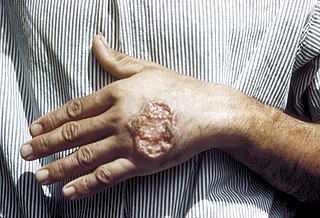
Leishmaniasis is a wide array of clinical manifestations caused by parasites of the Trypanosomatida genus Leishmania. It is generally spread through the bite of phlebotomine sandflies, Phlebotomus and Lutzomyia, and occurs most frequently in the tropics and sub-tropics of Africa, Asia, the Americas, and southern Europe. The disease can present in three main ways: cutaneous, mucocutaneous, or visceral. The cutaneous form presents with skin ulcers, while the mucocutaneous form presents with ulcers of the skin, mouth, and nose. The visceral form starts with skin ulcers and later presents with fever, low red blood cell count, and enlarged spleen and liver.

Kidney failure, also known as end-stage kidney disease, is a medical condition in which the kidneys can no longer adequately filter waste products from the blood, functioning at less than 15% of normal levels. Kidney failure is classified as either acute kidney failure, which develops rapidly and may resolve; and chronic kidney failure, which develops slowly and can often be irreversible. Symptoms may include leg swelling, feeling tired, vomiting, loss of appetite, and confusion. Complications of acute and chronic failure include uremia, hyperkalaemia, and volume overload. Complications of chronic failure also include heart disease, high blood pressure, and anaemia.
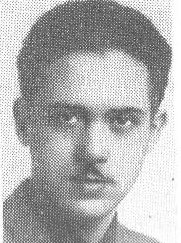
Henry Kuttner was an American author of science fiction, fantasy and horror.
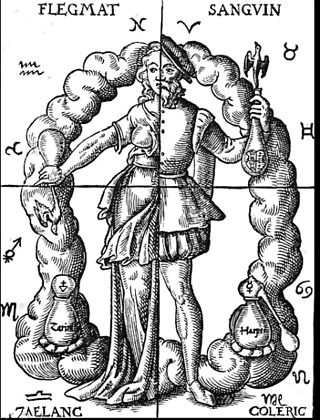
Humorism, the humoral theory, or humoralism, was a system of medicine detailing a supposed makeup and workings of the human body, adopted by Ancient Greek and Roman physicians and philosophers.

Karl Edward Wagner was an American writer, poet, editor, and publisher of horror, science fiction, and heroic fantasy, who was born in Knoxville, Tennessee and originally trained as a psychiatrist. He wrote numerous dark fantasy and horror stories. As an editor, he created a three-volume set of Robert E. Howard's Conan the Barbarian fiction restored to its original form as written, and edited the long-running and genre-defining The Year's Best Horror Stories series for DAW Books. His Carcosa publishing company issued four volumes of the best stories by some of the major authors of the so-called Golden Age pulp magazines. He is possibly best known for his creation of a series of stories featuring the character Kane, the Mystic Swordsman.

Carlos Justiniano Ribeiro Chagas, or Carlos Chagas, was a Brazilian sanitary physician, scientist, and microbiologist who worked as a clinician and researcher. Most well known for the discovery of an eponymous protozoal infection called Chagas disease, also called American trypanosomiasis, he also discovered the causative fungi of the pneumocystis pneumonia. He described the two pathogens in 1909, while he was working at the Oswaldo Cruz Institute in Rio de Janeiro, and named the former Trypanosoma cruzi to honour his friend Oswaldo Cruz.
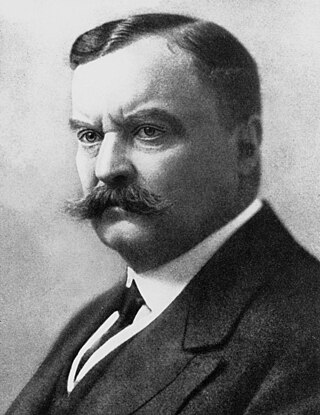
Major-General Sir David Bruce was a Scottish pathologist and microbiologist who made some of the key contributions in tropical medicine. In 1887, he discovered a bacterium, now called Brucella, that caused what was known as Malta fever. In 1894, he discovered a protozoan parasite, named Trypanosoma brucei, as the causative pathogen of nagana.

Trypanosoma cruzi is a species of parasitic euglenoids. Among the protozoa, the trypanosomes characteristically bore tissue in another organism and feed on blood (primarily) and also lymph. This behaviour causes disease or the likelihood of disease that varies with the organism: Chagas disease in humans, dourine and surra in horses, and a brucellosis-like disease in cattle. Parasites need a host body and the haematophagous insect triatomine is the major vector in accord with a mechanism of infection. The triatomine likes the nests of vertebrate animals for shelter, where it bites and sucks blood for food. Individual triatomines infected with protozoa from other contact with animals transmit trypanosomes when the triatomine deposits its faeces on the host's skin surface and then bites. Penetration of the infected faeces is further facilitated by the scratching of the bite area by the human or animal host.

Robert Oldham Young is an American naturopathic practitioner and author of alternative medicine books promoting an alkaline diet. His most popular works are the "pH Miracle" series of books, which outline his beliefs about holistic healing and an "alkalarian" lifestyle. Young came to prominence after appearances on The Oprah Winfrey Show featured his treatment of Kim Tinkham for breast cancer. Tinkham and Young both claimed that he had cured her, but she died of her disease shortly afterward. He was arrested in January 2014 and convicted in 2016 on two out of three charges of theft and practicing medicine without a license. He spent several months in jail in 2017.

The Chinese Agent (1970) is a comic novel by Michael Moorcock. It is a revision of Somewhere in the Night, which Moorcock published in 1966 under the pseudonym Bill Barclay. Although Moorcock is best known as the author of fantasy fiction and science fiction-based parables such as Behold the Man and The Dancers at the End of Time, here he writes a light-hearted caper that parodies the spy novel genre.
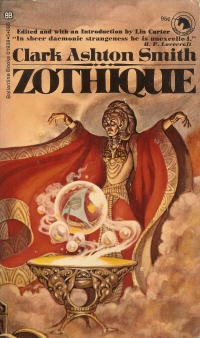
Zothique is a collection of fantasy short stories by Clark Ashton Smith, edited by Lin Carter. It was first published in paperback by Ballantine Books as the sixteenth volume of its Ballantine Adult Fantasy series in June 1970. It was the first themed collection of Smith's works assembled by Carter for the series. The stories were originally published in various fantasy magazines in the 1930s, notably Weird Tales.
This is a bibliography of the works of Michael Moorcock.
Modern Fantasy: The 100 Best Novels, An English-Language Selection, 1946–1987 is a nonfiction book written by David Pringle, published by Grafton Books in 1988 in the United Kingdom and the following year by Peter Bedrick Books in the United States. The foreword is by Brian W. Aldiss.

Fina Estampa is a Brazilian telenovela that first aired on TV Globo between August 22, 2011 and March 23, 2012 in 185 chapters.

Hélio Gelli Pereira was a Brazilian-British virologist specialising in adenoviruses. Pereira was a co-recipient of the 1988 UNESCO Carlos J. Finlay Prize for Microbiology and was known for his work on the book, Viruses of Vertebrates. He contributed to several areas of virology in research and international public service.